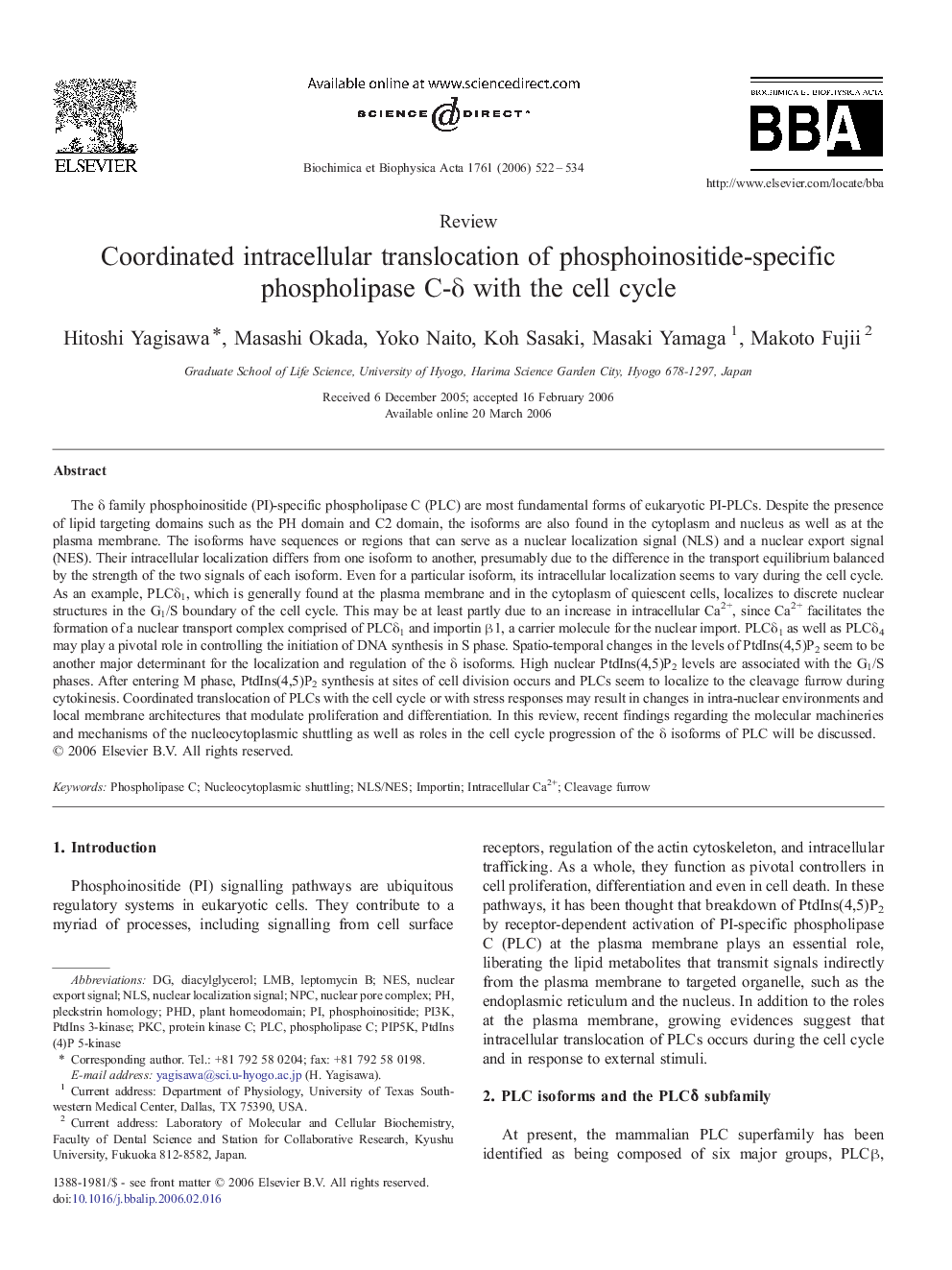| Article ID | Journal | Published Year | Pages | File Type |
|---|---|---|---|---|
| 1950329 | Biochimica et Biophysica Acta (BBA) - Molecular and Cell Biology of Lipids | 2006 | 13 Pages |
The δ family phosphoinositide (PI)-specific phospholipase C (PLC) are most fundamental forms of eukaryotic PI-PLCs. Despite the presence of lipid targeting domains such as the PH domain and C2 domain, the isoforms are also found in the cytoplasm and nucleus as well as at the plasma membrane. The isoforms have sequences or regions that can serve as a nuclear localization signal (NLS) and a nuclear export signal (NES). Their intracellular localization differs from one isoform to another, presumably due to the difference in the transport equilibrium balanced by the strength of the two signals of each isoform. Even for a particular isoform, its intracellular localization seems to vary during the cell cycle. As an example, PLCδ1, which is generally found at the plasma membrane and in the cytoplasm of quiescent cells, localizes to discrete nuclear structures in the G1/S boundary of the cell cycle. This may be at least partly due to an increase in intracellular Ca2+, since Ca2+ facilitates the formation of a nuclear transport complex comprised of PLCδ1 and importin β1, a carrier molecule for the nuclear import. PLCδ1 as well as PLCδ4 may play a pivotal role in controlling the initiation of DNA synthesis in S phase. Spatio-temporal changes in the levels of PtdIns(4,5)P2 seem to be another major determinant for the localization and regulation of the δ isoforms. High nuclear PtdIns(4,5)P2 levels are associated with the G1/S phases. After entering M phase, PtdIns(4,5)P2 synthesis at sites of cell division occurs and PLCs seem to localize to the cleavage furrow during cytokinesis. Coordinated translocation of PLCs with the cell cycle or with stress responses may result in changes in intra-nuclear environments and local membrane architectures that modulate proliferation and differentiation. In this review, recent findings regarding the molecular machineries and mechanisms of the nucleocytoplasmic shuttling as well as roles in the cell cycle progression of the δ isoforms of PLC will be discussed.
